|

|
The target population and their CBOs primarily implement the construction work themselves. This section aims to guide technical and social mobilisation staff in how to initiate, facilitate and supervise the construction of rural roads by the beneficiaries.
In situations of general food insecurity in the project area, the road construction approach can rely on different means of income transfers (see Figure 2): Food-for-Work (FfW), Cash-for-Work (CfW) or any combination of both approaches. Payments are generally based on standard outputs defined by the work norms of the respective government. Men and women receive the same payment for the same work outputs.
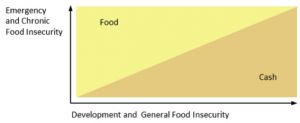
Figure 2: Food security and means of income transfers
Basic Principles of Green Road Construction
Technical Principles
- Construction during agricultural slack season: This enables target groups to work on construction sites and gain additional off-farm income.
- Phased construction: Roads are constructed in three different phases over the course of three years. These phases are interrupted by the rainy season (e.g. monsoon) during which work is stopped. During the first phase a 2 m wide track is opened. This is widened to 3.5 m in a second and to 4.5 m in the final phase.
- Sectoral construction (see Figure 3): The road is divided into several 5 to 10 km long sections with relatively independent construction management and work units. As a result, construction can start simultaneously along the entire alignment. This assures participation of large numbers of beneficiaries and speeding-up of a comparatively slow manual labour-based construction process.
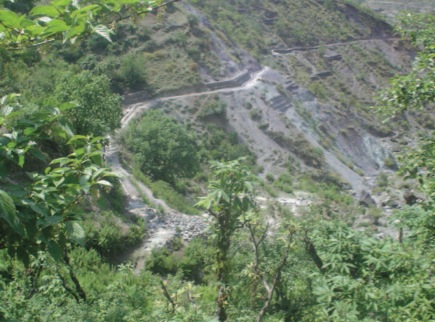
Photo 1: Roads are built in three different phases. Often traditional trails are widened to tracks and roads.
- Staged construction: Roads are initially constructed for low traffic-volumes. In case of increasing traffic needs they can later be upgraded by the beneficiaries if resources are available and the environmental conditions favour a widening of the initial road.
- Mass balancing: Reduces the volume of excavated material, which makes its disposal in safe places easier. It is achieved by applying a “cut-and-fill” approach in spite of conventional “box-cutting”.
- Payment based on standard outputs: Workers receive food and/or cash according to accomplished outputs rather than a fixed daily rate. This helps to accelerate the work progress and rewards committed hard working groups of beneficiaries.
- Alignment planning: Road alignment should make maximum use of supportive natural processes. The road should be exposed to sunlight so that it dries up quickly after rainfall and is less exposed to frost, which may cause destabilising cracks in the ground. The alignment should avoid areas near active landslides, erosive rivers and gullies. Where appropriate, alignments should be preferred against valley-bottom ones and one should refrain from building narrow serpentine-type switchbacks. Nevertheless, the road gradient should not exceed 12 degree. As the alignment defines who benefits most from the road and who has to bear its costs (e.g. loss of land), it is usually highly contested. Field staff should be prepared to handle pressure from different stakeholders. New roads will certainly alter settlement patterns in the area, as people will move to the roads to seize economic opportunities. Special attention should be paid to areas where such settlement development might lead to encroachment of hazard zones (Photo 2).
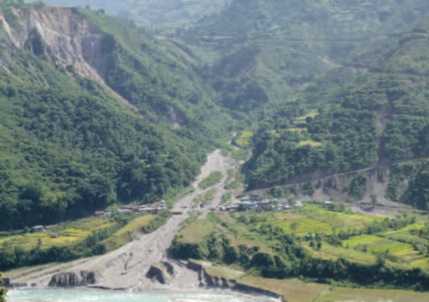
Photo 2: Settlement encroachment along roads in hazard-prone areas should be prevented
- Use of indigenous knowledge: Road alignments often follow traditional routes local people are familiar with. They can usually contribute extensive knowledge on areas where soils are soft and unstable or where marshy areas indicate high groundwater tables, which might induce landslides.
- Dispersed water management: The “Green Road Approach” aims at dispersed drainage of water run-off. In hilly terrain, the cross section of the road should therefore slope slightly outwards so that water is led away from the mountain side.
- Bio-engineering: After road completion, adjacent slopes should be rehabilitated by planting vegetation. Plants chosen for re-vegetation should grow well under the local conditions and have deep roots so that they serve as sub-surface anchors and reduce erosion and landslides. At best, the plants chosen should provide additional value (e.g. livestock forage) to the local population.
- Supportive structures: At some locations roads must be protected by retaining structures (e.g. walls of gabion boxes, Photo 3). Local workers need to be trained to construct these structures adequately.
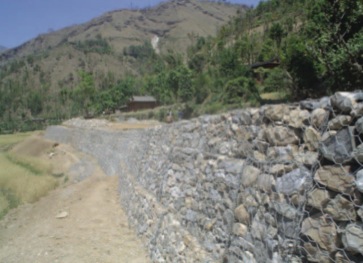
Photo 3: A gabion structure fortifies the lower side of the road, where the soil and groundwork is soft and heavy rainfalls cause erosion
- Use of local materials and equipment: This reduces costs of purchasing and transportation and assures that workers are easily able to handle both.
- Labour-intensive technologies: Using manual construction tools and peoples’ workforce provides employment for a large number of people and ensures user-friendly construction (Photo 4). Minimised utilisation of explosives and heavy equipment reduce destabilisation of slopes. Small contract work assignments are used only for more complex structural works, which require specific professional knowledge or external equipment.
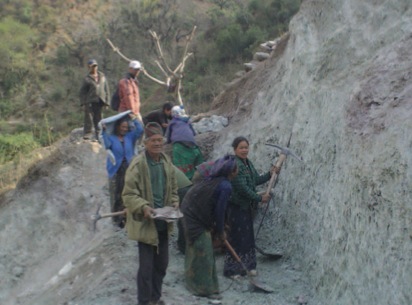
Photo 4: A worker group widens a track using simple tools
Socio-Economic Principles
- Participatory planning: Decisions are made within the framework of the program in a bottom-up manner through consensus. This strengthens involvement, decision-making power and responsibility of the beneficiaries. Additionally, it assures integration of indigenous knowledge into the project (e.g. through participatory hazard mapping during alignment planning).
- Social empowerment and inclusion: The project encourages women and members of socially disadvantaged groups to actively participate in decision-making and construction works. Special quota and criteria for the composition of CBOs are set.
- Trainings and capacity development: Labour-intensive and manual construction techniques promote self-help mentality and capacities, local skills development and local ownership of beneficiaries. Social mobilisation support and the provision of training on various levels throughout the project are crucial.
- Pooling of funds: “Green roads” depend on a high degree of local resource mobilisation. Ideally, the overall fund for road maintenance is provided by pooling of local, regional and – if possible – national government funds. Additional financial support should come from the road users themselves, in the form of road taxation and tolling systems. Local funds should cover about 50 % of routine and periodic maintenance expenses.
- Transparency and accountability: The utilization of funds and information on the project progress is discussed in public audits. Clear rules for conflict-resolution are developed in a participatory manner and adhered to throughout the project implementation. Payments for accomplished work take place in public.
- Voluntary contribution of land: One of the most common reasons for conflict is loss of (agricultural) land during road formation. However, land is regarded as a contribution in-kind by the landholders because the expected economic opportunities along the road will certainly increase land value considerably. However, in areas which are prone to natural hazards people should be discouraged to sell and develop land along the road.
|
|

|
Implementation Principles
- Implementation through CBOs: In order to build long-term organisational and institutional capacities, CBOs are trained to manage construction and maintenance of roads (see Figure 3). The organisations and their respective general responsibilities are as follows:
User Committees (UCs) are formed for each road section to manage construction works. The committee members are appointed during a general meeting of all beneficiaries (i.e. potential road users), who also have the right to exchange UC-members if they do not fulfil their tasks properly. UCs distribute tools and materials, and divide work among worker groups. Based on an evaluation of the quality and quantity of work conducted, they provide payment (food/cash). They are also responsible for settling conflicts in their respective section.
Worker Groups (WGs) are established by the UCs. They usually consist of 10 to 15 workers and are assigned a certain sub-section of the corridor, in which they conduct construction work.
A Road Federation (RF) is formed by all the UCs along a road. Its major responsibility is to manage the resources of a Social Security and Maintenance Fund (see Box 1) and to organise maintenance work. The federation also supports the UCs in dealing with land-related conflicts.
- Limited project contribution: The project delivers remuneration (cash/food) for work undertaken as well as tools and materials not available locally. In addition, it provides training, capacity development and technical assistance. To avoid dependency on the project, technical and social support is provided primarily during the construction period, and phased out once the road is completed and a proper maintenance system established.
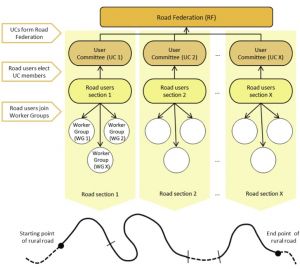
Figure 3: Community-based organizations in the context of rural road construction
- Decentralised project management: Especially in remote areas with difficult communication CBOs have to be supported by the project through a decentralised project management structure. The following structure has proved very effective:
A central project management is responsible for the overall management of financial and human resource issues, and for coordination with partner government and other donors.
A local project team facilitates road construction in the respective project area. It supports UCs in coordinating construction work, and ensures supply of food/cash for payment of workers as well as tools and materials. In order to ensure smooth project implementation the project team should live directly in the project area. Especially in conflict-situations it is important to have field offices that are accessible for members of all conflict parties. Headed by a district coordinator and supported by accounting staff, the team comprises basically two types of staffs:
Technicians: trained civil engineers preferably experienced in rural road construction and on-the job trained technical supervisors. They are responsible for technical surveys and provide construction skills training to the workers. Technicians are supported by local supervisors in monitoring the quality of work progress. To fulfil this task they are trained in construction principles of the “Green Road Approach” and basic measurement methods.
Social mobilisers: They support UCs in managing construction work in their respective road section. They train UC members in management capacities (e.g. record keeping, financial accounting) and support UCs in facilitating public audits and conflict-resolution throughout the project.
Constructing a “Green Road” Step by Step
Phase I: Preparation
Step 1 The project area is identified by the project team based on discussions with partner authorities and other donors, secondary data, and field verification.
Step 2 The project team provides basic orientation of potential beneficiaries about project objectives and approaches and discusses potential problems in a participatory manner.
Step 3 The project management coordinates with relevant government authorities and other donor agencies to establish cooperation.
Step 4 Beneficiaries, project team and other stakeholders jointly prioritise and select a road project based on existing transportation master plans, hazard maps, donor criteria, discussion with beneficiaries and field verification.
Step 5 The selected road project is initially approved by the project management to permit more detailed studies.
Phase II: Planning
Step 6 Supported by beneficiaries, the project team conducts a pre-feasibility study which evaluates economic, technical, and social viability of the road as well as hazard potential.
Step 7 The project management approves the pre-feasibility study for further processing.
Step 8 In a general meeting, which is facilitated by social mobilisers, beneficiaries form UCs for each road section. UC members are in line with the social empowerment and inclusion approach.
Step 9 A field survey is conducted to determine the concrete alignment of the road. This survey is done by the project team with the help of the local population, who contribute their indigenous knowledge. Besides, technical details, potential natural hazards, economic opportunities and social benefits are assessed. In addition, the survey elicits potential conflicts due to loss of agricultural land and other private property. These are to be solved by UCs applying standardised and transparent procedures and policies. The survey is completed by creating the road design and estimating the total costs.
Step 10 The road project is finally approved by the central project management which allocates financial and human resources.
Step 11 Before any construction works are started, the project team establishes a Social Security and Maintenance Fund (SSMF) (see Box 1)
|
 |
Box 1: Procedures to institutionalise a Social Security and Maintenance Fund (SSMF)
The SSMF is needed in case workers are injured or even killed during road construction. The fund is built up by the project, which allocates a certain amount of money per kg of rice distributed to a basic insurance for the workers. The compensation provided should not be a full compensation but only a topping-up of support to the victim or his/her family. After project completion the remaining fund forms the financial basis for future maintenance of the road.
Conditions for financial project support:
UCs must be federated into a RF and have an established bank account. Project contributions to the fund are directly deposited to this account. Initially, the project team becomes a signatory of the fund. This task is transferred to local authorities after the project has been phased out.
Roles and responsibilities of the Road Federation in managing the SSMF:
develop policies and criteria for utilising the fund (e.g. amount and type of compensation) with the consent of the users
maintain proper records of the fund, keep receipts of payments, and ensure that funds are not misused
assess condition of victims in case of accidents
make participatory decisions regarding compensation as per the fund policy. Amounts should be fixed in the very beginning!
declare the fund’s status (collection, utilisation, and balance) in periodic public review meetings
Conditions for compensation:
- UC and WGs have applied sufficient precautions to minimise the possibility of accidents.
- The accident occurred at the project site and the victim was injured from being involved in construction work.
|
| |
Phase III: Implementation
Step 12 The project team provides management training to UC members
Step 13 UCs and project team sign a project agreement
Step 14 Social mobilisers facilitate the formation of worker groups by beneficiaries and UCs representing them. Group composition has to follow the principles of social inclusion and self-targeting.
Step 15 Some members of the target communities are appointed local supervisors. They receive training in construction and measurement methods by technicians.
Step 16 UC members responsible for record keeping are trained in accounting techniques by social mobilisers.
Step 17 Technicians and UC members allocate jobs and working areas to WGs. They start construction following “Green Road” principles under guidance of technicians and local supervisors.
Step 18 Supported by local supervisors and social mobilisers technicians conduct qualitative and quantitative evaluation of works on a regular basis. This forms the basis for subsequent food and/or cash payments by the UCs.
Step 19 Supported by social mobilisers UCs conduct periodic public audits. Target groups are informed about utilisation of funds and progress of implementation. Audits also provide an opportunity to discuss further steps and create a sense of ownership for the road from the very beginning.
Step 20 UCs federate into a RF whose members receive management training by social mobilisers.
Step 21 The SSMF is built up according to the progress of the construction work (see Box 1).
Step 22 The road is officially inaugurated in a ceremonial act. By this the responsibility for the road is finally completely transferred to the local communities.
Phase IV: Operation and Maintenance
Overall responsibility for operation and maintenance (O&M) lies with the beneficiaries, who are expected to provide immediate information on damage to or misuse of infrastructure to the RF. In addition, they are expected to contribute voluntary labour to maintain the road and to repair damages caused by vehicle movement, erosion and landslides. To support beneficiaries in their maintenance efforts sufficient funds for purchasing required tools and materials and an institutionalised operation and maintenance system are needed (see Box 2). To minimise maintenance, the road should be closed during rainy seasons (e.g. monsoon) and used only by light vehicles with a maximum weight of 10 metric tons.
Step 23 Social mobilisers support the RF in establishing a maintenance system (see Box 2).
Step 24 The RF maintenance committee and worker groups are trained by social mobilisers and technicians to perform their duties. The project provides the worker groups with a minimum of necessary tools and materials.
Step 25 The RF maintenance committee carries out regular monitoring of the road status, especially right after the rainy season. It plans required maintenance activities which are carried out by worker groups.
|
 |
Monitoring and Reporting
The project team, UCs and local supervisors are responsible for participatory monitoring of the work progress on a regular basis as outlined below:
Work Supervision Activities
- Daily (routine) supervision: Local supervisors oversee work according to “Green Road” principles and alignment planning.
- Daily record keeping: UCs maintain records of work materials used, materials requirement, and daily labour used.
- Quality control: Technicians control the quality of accomplished work according to the design and specification of jobs, materials and methods to be used.
Regular Monitoring Activities
- Bi-monthly traffic survey: Local supervisors count road users (people, vehicles and others such as mules) during the end-phase of construction and after road completion. This data serves to plan future road extension. During the survey they also make sure that roads are closed during rainy season and only used by light vehicles.
- Periodic checks: Local supervisors check inventory of tools, materials, and work progress.
- Regular work evaluation: Technicians evaluate the quantity and quality of construction work as well as the inputs of resources.
- Check of resource flow: The project team ensures resources (personnel, materials, tools, etc.) are supplied “on time”.
- Bi-monthly monitoring: The project team inventories the social composition of WGs and the distribution of cash and food. In addition, it calculates the person-day inputs for work accomplished.
- Public auditing: Public audits are carried out after each payment by the respective UC facilitated by social mobilisers.
- Checks of road condition and protective structures: The RF maintenance committee conducts periodic checks of damages to roads and protective structures. These checks are intensified during and right after the rainy season.
Impact Monitoring:
Participatory impact monitoring is carried out on a yearly basis at the UC-level by project staff. Opinion surveys are used to obtain the perception of users regarding:
- social changes that are taking place in the life of beneficiaries and respective family members,
- economic changes in terms of income opportunities of the beneficiaries and their financial reinvestment patterns,
- food sufficiency, changes in nutritional and health status on household level, and
- settlement development and the possibility of increased encroachment of hazard-prone areas (unintended impact).
|








